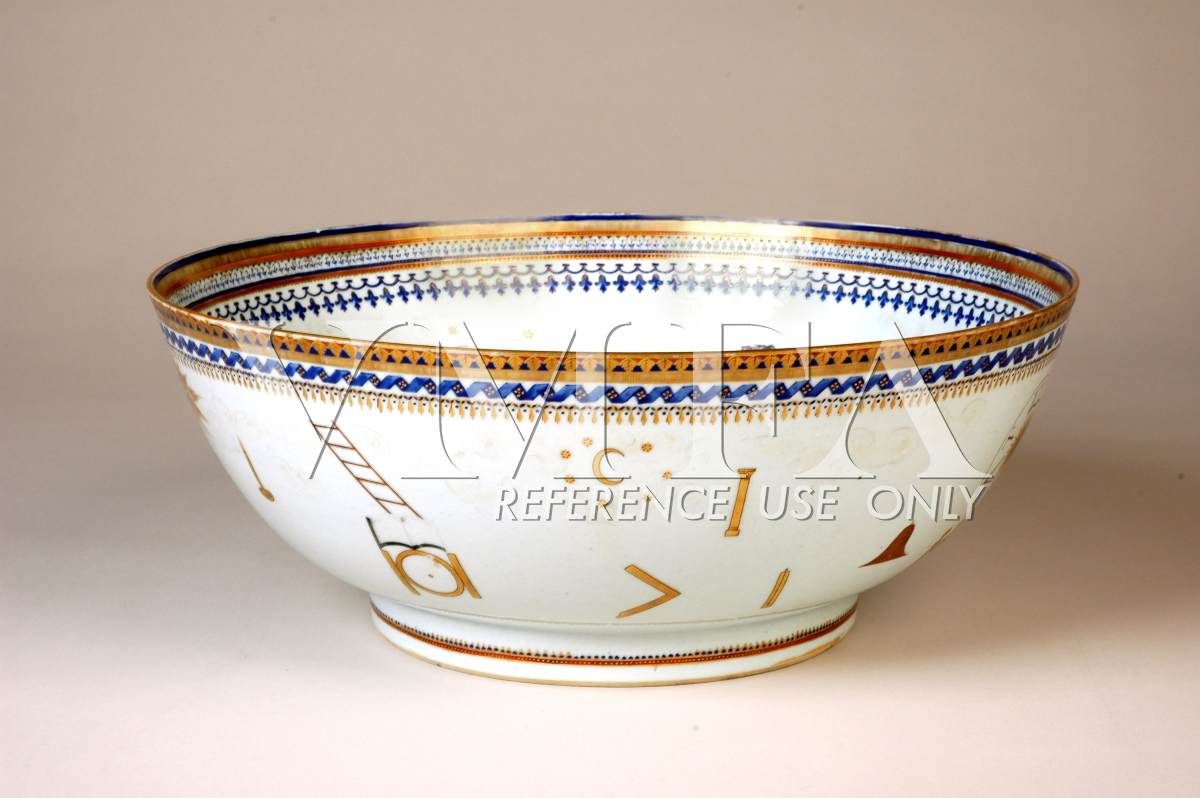
Masonic Punch Bowl (Primary Title)
Unknown (Artist)
Made in China for an English or American buyer, this punch bowl is peppered with Masonic motifs intended to educate and improve moral virtues. Among lodge members, the simple tools and architectural forms conveyed ideals of wisdom, justice, and virtue: the square stood for balanced righteousness, the compass for the parameters of moral behavior, and the level for equality. Above them is the supreme “all-seeing eye.”
Although Freemasonry came to the United States in the 1730s, it flowered with the democratic ideals of the New Republic. Many of America’s leading patriots – Revolutionary War generals, signers of the Declaration of Independence and Constitution, and even its first president – were Freemasons. George Washington took his presidential oaths on a Masonic Bible. The philosophy suited American notions of proper civic behavior.
The punch bowl itself embodied a specific cultural ideal of communal interaction. Whereas the tea table engaged individuals in polite and regulated behavior, the punch bowl involved an informal group in conversation. Likewise, the tea table was presided over by an individual woman, but the punch bowl was a medium for fraternizing men.
Some object records are not complete and do not reflect VMFA's full and current knowledge. VMFA makes routine updates as records are reviewed and enhanced.

